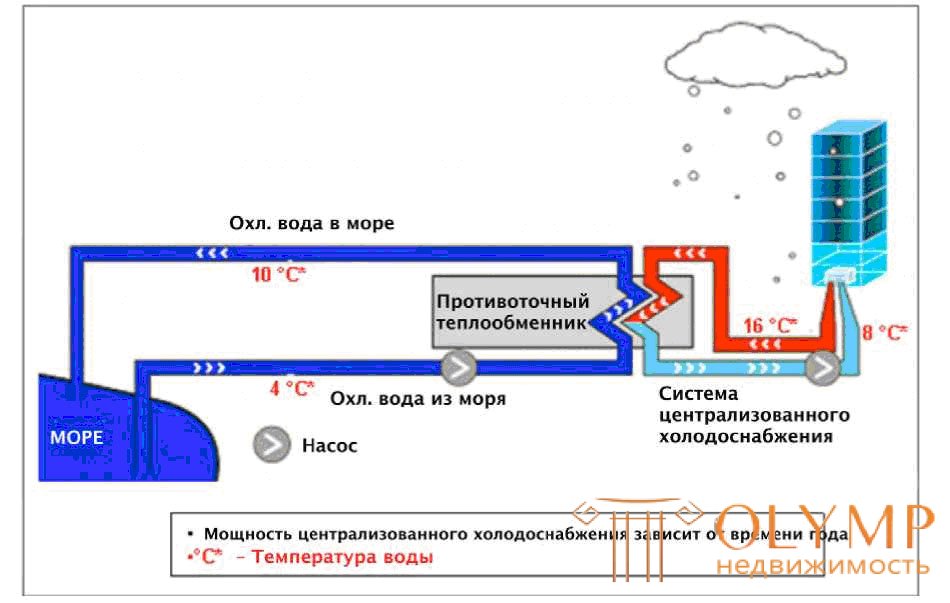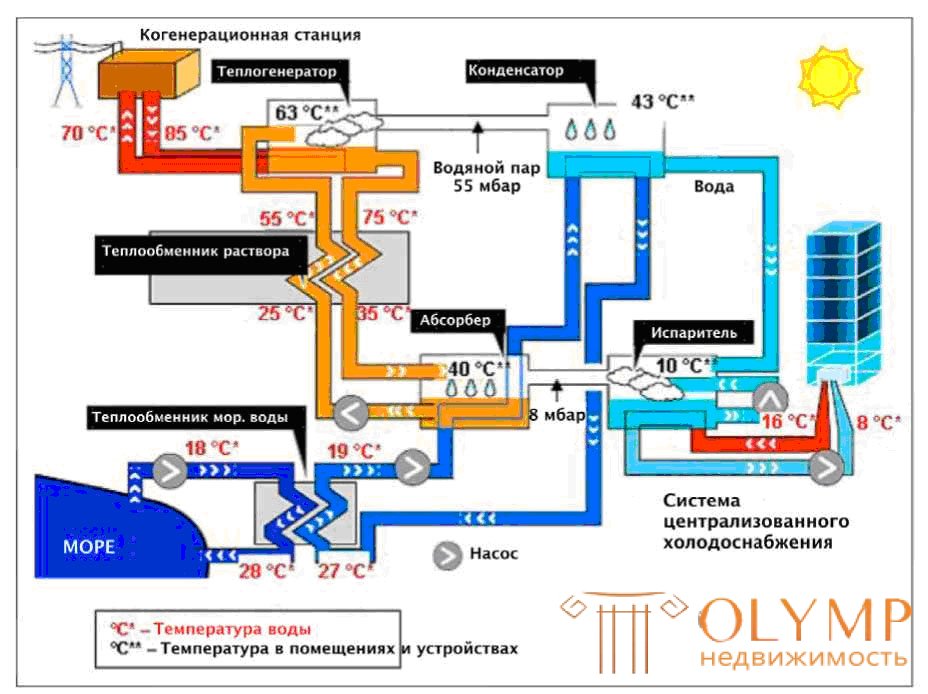
general characteristics
The organization of centralized cooling is another possible application of cogeneration. In this case, cogeneration provides for the production of electricity, which is supplied to distribution networks, and heat, which is used to drive absorption chillers. The cold is distributed in the form of chilled water supplied to consumers through a separate distribution network.
Centralized cooling can be organized in various ways depending on the time of year and the outdoor temperature. In winter, cold sea water (Fig.) Can be a source of cold, at least in northern countries. In the warm season, absorption technology can be used for cooling. Centrally produced cold can be used for air conditioning and cooling of office, commercial and residential premises.

Picture. The organization of centralized cooling in the winter based on free cooling with sea water

Picture. The organization of centralized cooling in the summer based on absorption cooling
Environmental benefits
Improving the eco-efficiency of the centralized heat supply system (CTC) and the centralized cold supply system (CHS) in Helsinki (Finland) contributed to the achievement of many sustainable development goals, as shown below:
Impact on various environmental components
Impacts associated with the construction of a distribution system.
Production Information These systems are reliable.
Applicability
This method can be widely used, but its applicability depends on local conditions.
Economic aspects
Significant investments are needed in the creation of distribution networks.
District cooling in Moscow will turn the batteries into air conditioners
Moscow power engineers plan to use batteries in city apartments as ... air conditioners.
The centralized refrigeration of the power industry is proposed to be used in houses on the territory of the “new Moscow”, Skolkovo and Moscow-City, with the corresponding project at the end of last year, the management of OJSC “MOEK” spoke at one of the industry conferences.
Trigeneration in question involves the simultaneous production of three types of energy: electricity, heat energy and chilled water.
In winter, heat is supplied to the heating system to heat the apartments, and in the summer, ice water is cooled.
"The use of trigeneration makes it possible not only to optimize production costs, but also to offer Muscovites a new service - centralized cooling of premises during the summer period, which can be an alternative to electric air conditioning," clarify the Moscow energy sector. Centralized cooling will reduce the consumption of electrical energy for the needs of air conditioning. "The development of the trigeneration will make Moscow the fourth largest city in the world of centralized cold supply to consumers after Paris, Stockholm and Helsinki," says MOEK information materials.
Что бы оставить комментарий войдите
Комментарии (0)